Intermarkets' Privacy Policy
Donate to Ace of Spades HQ!
aceofspadeshq at gee mail.com
Buck:
buck.throckmorton at protonmail.com
CBD:
cbd at cutjibnewsletter.com
joe mannix:
mannix2024 at proton.me
MisHum:
petmorons at gee mail.com
J.J. Sefton:
sefton at cutjibnewsletter.com
Zoomies Cafe
Quick Hits
Emails: Fauci Knew That Natural Immunity Far Surpassed the Non-Immunity Conferred by the Covid Non-Vaccine, But Lied to the Public Anyway and Fought for Mandated Vaccinations of the Already-Immune
Harmeet Dhillon Prosecuting Church-Terrorists Under the KKK Act?
"Protesters" Now Assaulting Random People on the Streets of Minneapolis Hunting for ICE Agents and Invading Churches
Illinois Governor (and Possible Presidential Candidate) JB Pritzker Signs Law Sealing Criminal Records to Protect Illegals from Deportation by the Feds
As Part of the VP Candidate Vetting Process, Kamala Harris's Staff Asked Josh Shapiro If He Was a Double Agent for Israel
THE MORNING RANT - Volkswagen’s Electric Vehicle Misfire: Its Made-In-America, Flagship EV is the Slowest Selling Vehicle in the United States
Mid-Morning Art Thread
Jim Sunk New Dawn 2025
Jewells45 2025
Bandersnatch 2024
GnuBreed 2024
Captain Hate 2023
moon_over_vermont 2023
westminsterdogshow 2023
Ann Wilson(Empire1) 2022
Dave In Texas 2022
Jesse in D.C. 2022
OregonMuse 2022
redc1c4 2021
Tami 2021
Chavez the Hugo 2020
Ibguy 2020
Rickl 2019
Joffen 2014
maildrop62 at proton dot me
TBD
Saturday Gardening Thread: Fall Into Gardening Edition [Y-not and KT]
Good afternoon, gardeners!
So this happened last night:
That's frost, ladies and gentleman. Apparently, winter is coming. This song by Graham Plowman seems timely:
No wonder I've been seeing Christmas decorations in the stores for the past couple of weeks!
I don't remember if KT linked to this yet, but Farmer's Almanac released their 2016 Winter Forecast and it ain't pretty:
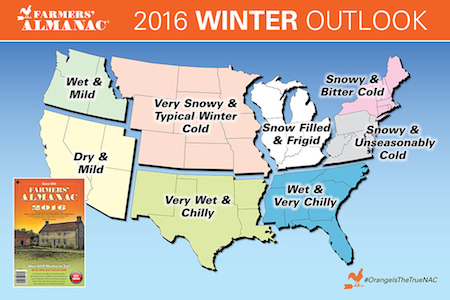
...the winter of 2015-2016 is looking like a repeat of last winter, at least in terms of temperatures with unseasonably cold conditions over the Atlantic Seaboard, eastern portions of the Great Lakes, and the lower peninsula of Michigan, Ohio, Kentucky, most of the Tennessee and Mississippi Valley, as well as much of the Gulf Coast.New Englanders will once again experience a very frigid (shivery) winter (Deja vu).
Looks like I picked a great time to move back East. /sarc
Eat Your Vegetables!
One thing I like to do when I move to a new part of the country is learn to eat like the locals, especially when it comes to the regional produce. Around here I've been having some good luck finding small farmers who sell meat, especially pork and beef. I've even found a "lamb gal." However, good quality fruits and vegetables have been harder to come by. The selection is pretty grim and, even worse, nothing I'm buying is lasting more than a couple of days in the fridge. Our best local grocery store is a barely-adequate Kroger, so I've started going further afield (SWIDT?) to farms, orchards, and farmers markets.
It's been a good experience, not only in finding better-quality food for my kitchen, but also as a cultural immersion. You know you're in the South when there are a dozen types of greens (including several types of mustards), as well as black-eyed peas and okra.
Sadly, many Americans don't eat their vegetables:
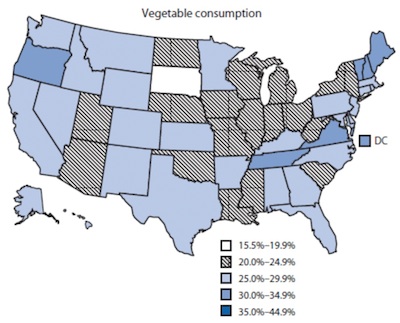
I say "sadly" because there is so much cultural history to be gleaned from the things a community grows and eats. A lot is lost when we rely on a homogenized diet of prepared foods and "fast food" meals. Although I think the "eat locally" movement has been overdone (and politicized), I do find joy in learning what the locals grow and eat.
In any event, since moving I'm learning all about greens, as well as black-eyed peas, beans, and okra. But the biggest surprise has been sorghum.
Sorghum
Around these parts, I've discovered that sorghum is A Thing. I confess, I have never encountered it before in any of the places where I've lived, but Kentuckyians seem to love the stuff, including holding festivals in the Fall when it is harvested.
Termed "the camel of crops," sorghum has experienced a resurgence, including in the U.S.:
Sorghum "originated in the northeastern quadrant of Africa," explains Gebisa Ejeta, a plant scientist from Ethiopia and professor at Purdue University. From there, it spread across Africa, India and even into China. "It's got a lot of characteristics that make it a favorite crop for the drylands of Africa and the semi-arid tropics."It's an essential source of food in those regions, but it's not typically a big money crop. In Africa, it's grown by subsistence farmers. It's never gotten much attention from seed companies or investors.
But it is nutritious. It can grow in soils that other plants won't tolerate. Above all, it doesn't need much water. Compared with corn, for instance, it needs one-third less water, and it doesn't give up and wilt when rains don't come on time. It waits for moisture to arrive.
It probably arrived in North America aboard slave ships. That traditional sorghum looks like an overgrown corn plant, up to 10 feet tall, with a head of seeds on top.
Today, American farmers grow two kinds of sorghum. Sweet sorghum is tall; you can use it to make a sweet syrup or just feed the whole plant to animals.
But most sorghum in the U.S. is grown for feed grain. That version of the plant is short, with seeds that come in several different colors.
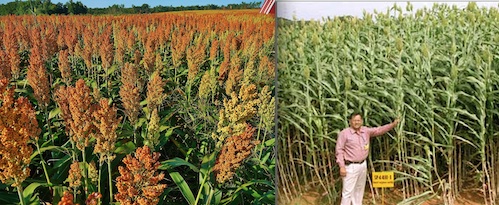
Here's a list of the top sorghum-producing states:
Sorghum was planted on approximately 7.1 million acres in 2014 and 433 million bushels were produced. The top five sorghum producing states in 2014 are:Kansas -- 2.7 million harvested acres
Texas -- 2.25 million harvested acres
Oklahoma -- 310,000 harvested acres
Colorado -- 280,000 harvested acres
Arkansas -- 165,000 harvested acres
Also called "Columbus grass," sorghum can stimulate allergies in some people. Here's a map showing the distribution of Columbus grass in the U.S.:
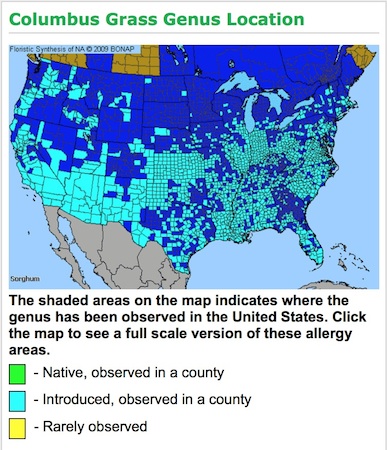
I believe Kentucky is known for its sweet sorghum (as is Tennessee, according to this article). From the sweet sorghum plant, you can make a syrup or a type of flour (read a bit about that here at Dave's Garden).
I picked up a jug of sweet sorghum syrup at a local orchard, but I haven't tried it yet. Some people tout it for its nutritional properties:
Health Benefits of Sorghum SyrupUnlike sugar, which is 100% empty calories devoid of nutrition, you can actually expect some nutritive value from a purely natural sweetener like sorghum. Before multivitamins, doctors sometimes prescribed sorghum syrup to help folks get the necessary iron, calcium, and potassium.
Check out the nutritional profile for just a Tablespoon of sorghum syrup:
30 mg calcium (3% DV)
300 mg protein
.76 mg iron (almost as high as blackstrap molasses; 4% DV)
20 mg magnesium (5% DV)
11 mg phosphorus
200 mg potassium (almost 6% DV)
.80 mg zinc (5% DV)
.03 mg riboflavin (a B vitamin; almost 2% DV)Some of those percentages seem low, for sure, but remember that's in just a Tablespoon of a sweetener, where if you choose honey or table sugar, you get practically nothing. I'm impressed!
Possible Disadvantages of Sorghum
Sorghum syrup is still a sweetener, and it actually has more calories per Tablespoon than molasses, maple syrup, or white sugar and about equal to honey. If you're diabetic or need to avoid blood sugar spikes, sorghum is not a safe alternative sweetener.
You can read more about the revival of sorghum syrup at the aptly named website, Garden and Gun.
Do any of you have experience growing or using sorghum?
Now, here are words of wisdom from the incomparable KT:
Fresh herbs for fall
Thanksgiving is already over for Morons and Moronettes in Canada. I wish I had gotten to the subject of fall herbs earlier. Fresh herbs can make a difference. I ran across a page at Bonnie Plants about season-extending herbs for fall. They included Parsley, Sage, Rosemary and Thyme, of course.
You music geeks out there might be interested in a little history about the familiar, yet kind of strange, ballad "Scarborough Fair." Its words are similar to a really old song, "The Lovers Tasks."
The song may have evolved from a Scottish ballad about an Elfin Knight. "The riddles in British folk-songs and ballads usually take the form of a confrontation with the supernatural, or the Devil in some versions, where the soul of the mortal, marriage or seduction may be the prize."

It has also been suggested that (parsley, sage, rosemary and thyme) were specifically used to ward off the Black Plague, particularly the smell of the dead or dying. According to popular belief in Medieval times, it was the smell of the plague which carried infection and the use of these herbs would cleanse air.
Halloween is coming, but I am not going to get into the "doom metal" rendition of the ballad by "My Dying Bride." Back to herbs.
The other herbs Bonnie Plants suggested for fall include chives, lavender, cilantro and mint. "You can put an assortment of your favorite cool-weather-loving fall herbs by the kitchen door -- all in one container, if you like -- for a pinch of each right at your fingertips. You can also plant pretty cilantro and parsley in existing flower beds or containers to serve as a green companion for pansies and other winter flowers." For today, I will be comparing the garden culture of the two herbs grown as annuals, cilantro and parsley. Let me know in the comments if you have questions about the others.
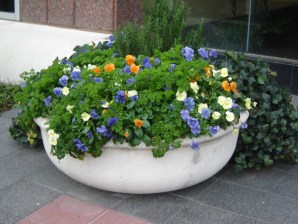
Unlike most perennial herbs, cilantro and parsley are grown from seeds rather than from cuttings, even if you buy plants at a nursery. They are related to each other, but there are differences in their garden culture. Cilantro is easy to grow but bolts easily. Some cultivars are more bolt-resistant than others. It prefers cool growing conditions but full sun.
Parsley is generally easy to grow once it sprouts, but it can take a long time to sprout. Johnnys lists average germination times of 7 to 10 days for cilantro and 14 to 30 days for parsley. Sometimes parsley seeds do not come up in 6 weeks. Because the seeds take so long to sprout, you might consider buying parsley plants if you want to set some out this fall. But get the plants while they are young, because neither cilantro nor parsley likes to be transplanted.
The unusually long germination time for parsley is due to a chemical in the seed coat that inhibits germination. As a practical matter, this means that, in most climates, if you want parsley plants in spring you can sow the seeds in early winter and leave them in the ground to come up in spring. The chemical in the seed coats will help prevent nearby weed seeds from getting too big a head start on the parsley.
If you allow one of your favorite parsley plants to bolt and spread seed, you are likely to get seedlings the next spring. Parsley is an excellent candidate for growth from winter-sown seeds, if you transplant the seedlings when they are small.
Parsley was associated with Hades (among other things) by the ancients. "An old folk legend explains that parsley has to go to Hades and back 9 times before it will germinate."

In moderate climates, both cilantro and parsley can be started from spring-sown seeds. In the low desert, both are started in early fall. It is recommended that cilantro be succession-planted every two weeks for a continuous supply, weather permitting.
Parsley can be harvested over a long season by cutting only the outer leaves. The flavor is not acceptable during our hot summers, but I have had plants live over the summer in shady locations. I may have cut them back. Don't remember. Although parsley is a biennial, it produces the best-tasting leaves when grown as an annual.
Parsley comes in flat-leaved, curly-leaved and parsnip-rooted cultivars. I have never grown parsley root. The flavor is supposed to be quite different from the flavor of parsnips. I found a site with a lot of interesting information on garden culture, uses and history of parsley root as well as parsley grown for its leaves.
There are some strains of parsley (mostly curly kinds) that taste soapy to me. Some curly parsley cultivars also have rather hard-edged leaves, making them much more suitable for garnishes than for eating. If you grow your own, try a cultivar chosen for flavor and texture as well as beauty.
Flat-leaved strains of parsley are generally preferred for cooking or for salads. Giant Italian is my favorite -- mild, sweet and flavorful. Pinetree sells it under the Italian name. The leaves are bigger than regular Italian parsley leaves, but the plants are "not all that gigante." Johnnys lists the height as 18-20 inches, vs. 16-18 inches for its selected small-leaved Italian cultivar, Titan.
I think Giant Italian is the one to use if you are making a dish that uses a lot of raw parsley, such as tabouli. For cooler fall weather, after the tomatoes and basil are gone from the garden, try a parsley pesto with walnuts or one with almonds and chives. You can really appreciate the differences between parsley cultivars in recipes like these. One reason to grow your own.
I enjoy dishes that contain a lot of parsley, but they remind me of a cautionary family story about my Great Uncle Carl. Long before I was born, perhaps even before the Great Depression, he bought and drank an entire cup of parsley juice, thinking it would improve his health. He became very, very ill. Even back then, juicing veggies and herbs was a thing. Even back then, people were getting bad health advice.
Have you ever mistaken cilantro for Italian parsley at the supermarket? Remember that "C" is for Cilantro: the leaves curve. "P" is for Parsley: the leaves come to a point. The preceding link contains a nice summary on use of cilantro in the kitchen.

I enjoy coriander, the seed from the cilantro plant, in cooking. I do not like cilantro leaves. I think I am one of those people who has the genetic predisposition to find cilantro unappealing. We have discussed this before in the Saturday Gardening Thread. My sense has been that the cilantro-loving and cilantro-hating members of the AoSHQ Gardening Community can still get along. Though I prepare foods containing cilantro sometimes, I have no cilantro recipes to offer today.
But I found a comprehensive piece on growing cilantro, whether you live in the North or the South. A page from the Old Farmers Almanac includes information on harvesting seed and freezing or drying leaves. Freezing is probably better for this herb, though I would not count on the flavor holding up for more than a few weeks.
Both parsley and cilantro will take a hard frost. I was a little bit surprised to learn that cilantro is frost-tolerant, unlike another relative, dill. I imagine that parsley is a little hardier than cilantro, but I don't know for sure. Some cultivars of parsley are described as more cold-tolerant than others.
Still, I have a hard time thinking of these herbs as "harvest from under the snow" crops. A low tunnel, high tunnel, cold frame or unheated greenhouse would probably extend the harvest in the Frozen North.
Have you got any garden plans for the coming cold season?
Y-not: Thanks, KT!
To wrap things up, here's Mashilae (Sorghum Song) by John Williams:
What's happening in YOUR gardens this week?
gKWVE: "[i]278 Everything coming from officialdom in Islam ..."
browndog feared for his life: "And then we remembered we were in a van with a kic ..."
Gref: "Miami - 57-yard rushing TD. Now 10-7 IU. 11:06 rem ..."
Nawlins : "[i]Toni Basil was an actress or dancer in Viva Las ..."
rhomboid: "Franpsycho, negative. Nothing of the sort. Serio ..."
runner: " Everything coming from officialdom in Islamic re ..."
San Franpsycho: "Got renters next door for the first time in 3 year ..."
Itinerant Alley Butcher: ">>> “Come and Get Me Pam Bondi You F*cking T ..."
Common Tater: "All of them run on car gas, actually. I’ve u ..."
San Franpsycho: "In its august wisdom, the WEF invited the Iranian ..."
BarelyScaryMary: "Get a Coleman Dual Fuel. It can run white gas or r ..."
Zoomies Cafe
Quick Hits
Emails: Fauci Knew That Natural Immunity Far Surpassed the Non-Immunity Conferred by the Covid Non-Vaccine, But Lied to the Public Anyway and Fought for Mandated Vaccinations of the Already-Immune
Harmeet Dhillon Prosecuting Church-Terrorists Under the KKK Act?
"Protesters" Now Assaulting Random People on the Streets of Minneapolis Hunting for ICE Agents and Invading Churches
Illinois Governor (and Possible Presidential Candidate) JB Pritzker Signs Law Sealing Criminal Records to Protect Illegals from Deportation by the Feds
As Part of the VP Candidate Vetting Process, Kamala Harris's Staff Asked Josh Shapiro If He Was a Double Agent for Israel
THE MORNING RANT - Volkswagen’s Electric Vehicle Misfire: Its Made-In-America, Flagship EV is the Slowest Selling Vehicle in the United States
Mid-Morning Art Thread
Paul Anka Haiku Contest Announcement
Integrity SAT's: Entrance Exam for Paul Anka's Band
AllahPundit's Paul Anka 45's Collection
AnkaPundit: Paul Anka Takes Over the Site for a Weekend (Continues through to Monday's postings)
George Bush Slices Don Rumsfeld Like an F*ckin' Hammer
Democratic Forays into Erotica
New Shows On Gore's DNC/MTV Network
Nicknames for Potatoes, By People Who Really Hate Potatoes
Star Wars Euphemisms for Self-Abuse
Signs You're at an Iraqi "Wedding Party"
Signs Your Clown Has Gone Bad
Signs That You, Geroge Michael, Should Probably Just Give It Up
Signs of Hip-Hop Influence on John Kerry
NYT Headlines Spinning Bush's Jobs Boom
Things People Are More Likely to Say Than "Did You Hear What Al Franken Said Yesterday?"
Signs that Paul Krugman Has Lost His Frickin' Mind
All-Time Best NBA Players, According to Senator Robert Byrd
Other Bad Things About the Jews, According to the Koran
Signs That David Letterman Just Doesn't Care Anymore
Examples of Bob Kerrey's Insufferable Racial Jackassery
Signs Andy Rooney Is Going Senile
Other Judgments Dick Clarke Made About Condi Rice Based on Her Appearance
Collective Names for Groups of People
John Kerry's Other Vietnam Super-Pets
Cool Things About the XM8 Assault Rifle
Media-Approved Facts About the Democrat Spy
Changes to Make Christianity More "Inclusive"
Secret John Kerry Senatorial Accomplishments
John Edwards Campaign Excuses
John Kerry Pick-Up Lines
Changes Liberal Senator George Michell Will Make at Disney
Torments in Dog-Hell
The Ace of Spades HQ Sex-for-Money Skankathon
A D&D Guide to the Democratic Candidates
Margaret Cho: Just Not Funny
More Margaret Cho Abuse
Margaret Cho: Still Not Funny
Iraqi Prisoner Claims He Was Raped... By Woman
Wonkette Announces "Morning Zoo" Format
John Kerry's "Plan" Causes Surrender of Moqtada al-Sadr's Militia
World Muslim Leaders Apologize for Nick Berg's Beheading
Michael Moore Goes on Lunchtime Manhattan Death-Spree
Milestone: Oliver Willis Posts 400th "Fake News Article" Referencing Britney Spears
Liberal Economists Rue a "New Decade of Greed"
Artificial Insouciance: Maureen Dowd's Word Processor Revolts Against Her Numbing Imbecility
Intelligence Officials Eye Blogs for Tips
They Done Found Us Out, Cletus: Intrepid Internet Detective Figures Out Our Master Plan
Shock: Josh Marshall Almost Mentions Sarin Discovery in Iraq
Leather-Clad Biker Freaks Terrorize Australian Town
When Clinton Was President, Torture Was Cool
What Wonkette Means When She Explains What Tina Brown Means
Wonkette's Stand-Up Act
Wankette HQ Gay-Rumors Du Jour
Here's What's Bugging Me: Goose and Slider
My Own Micah Wright Style Confession of Dishonesty
Outraged "Conservatives" React to the FMA
An On-Line Impression of Dennis Miller Having Sex with a Kodiak Bear
The Story the Rightwing Media Refuses to Report!
Our Lunch with David "Glengarry Glen Ross" Mamet
The House of Love: Paul Krugman
A Michael Moore Mystery (TM)
The Dowd-O-Matic!
Liberal Consistency and Other Myths
Kepler's Laws of Liberal Media Bias
John Kerry-- The Splunge! Candidate
"Divisive" Politics & "Attacks on Patriotism" (very long)
The Donkey ("The Raven" parody)

